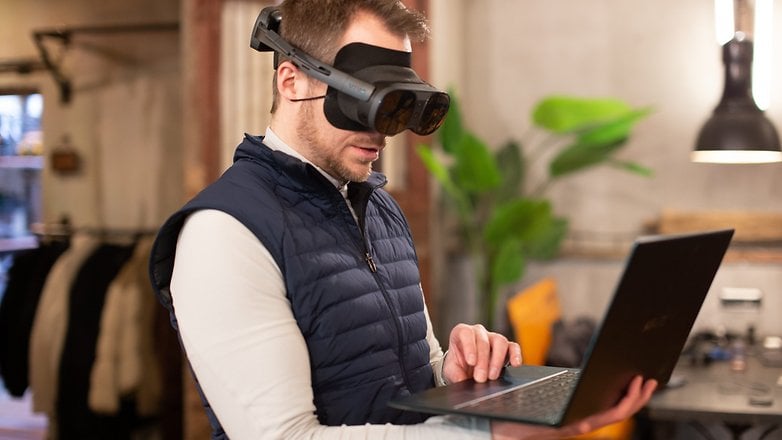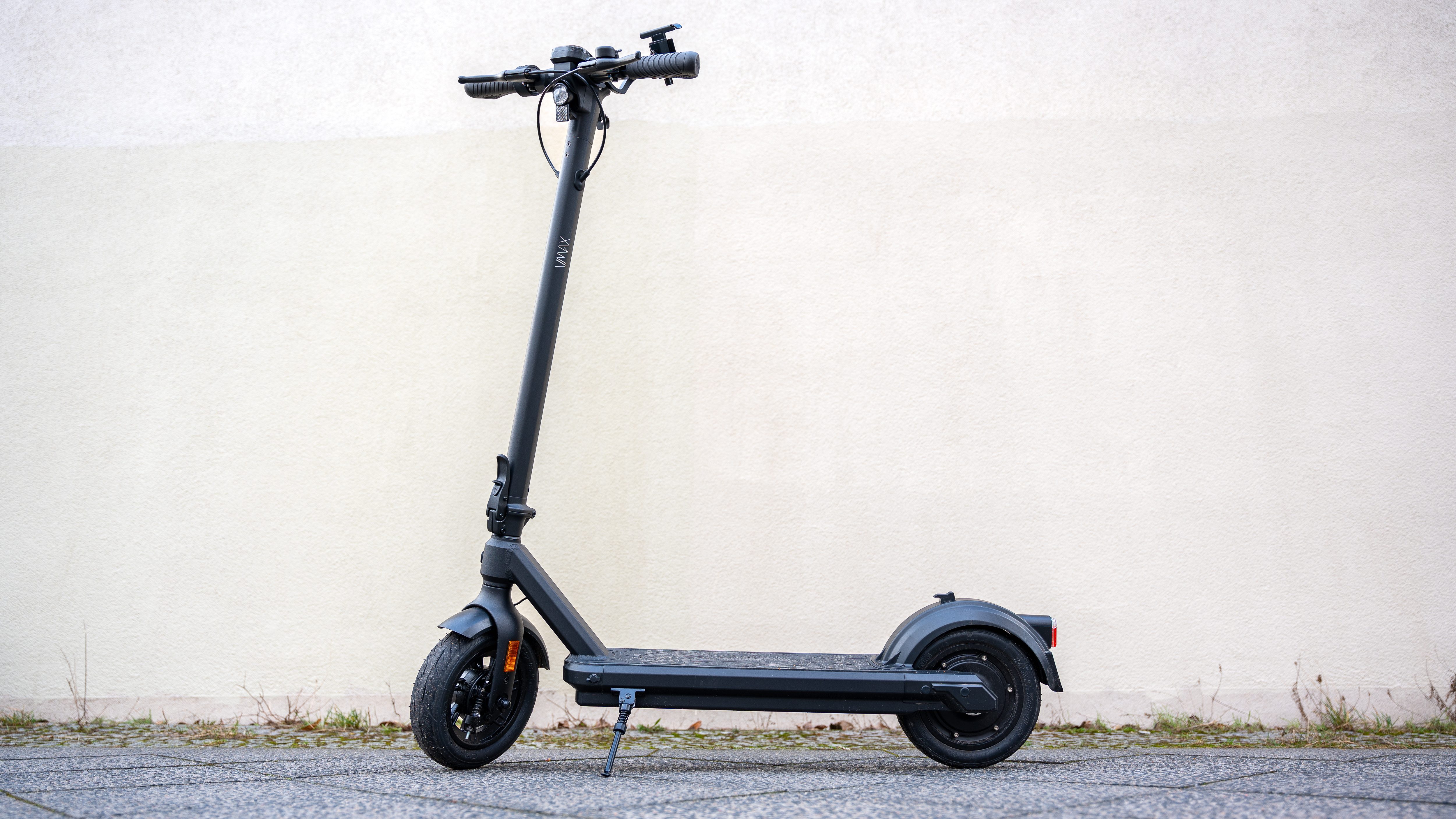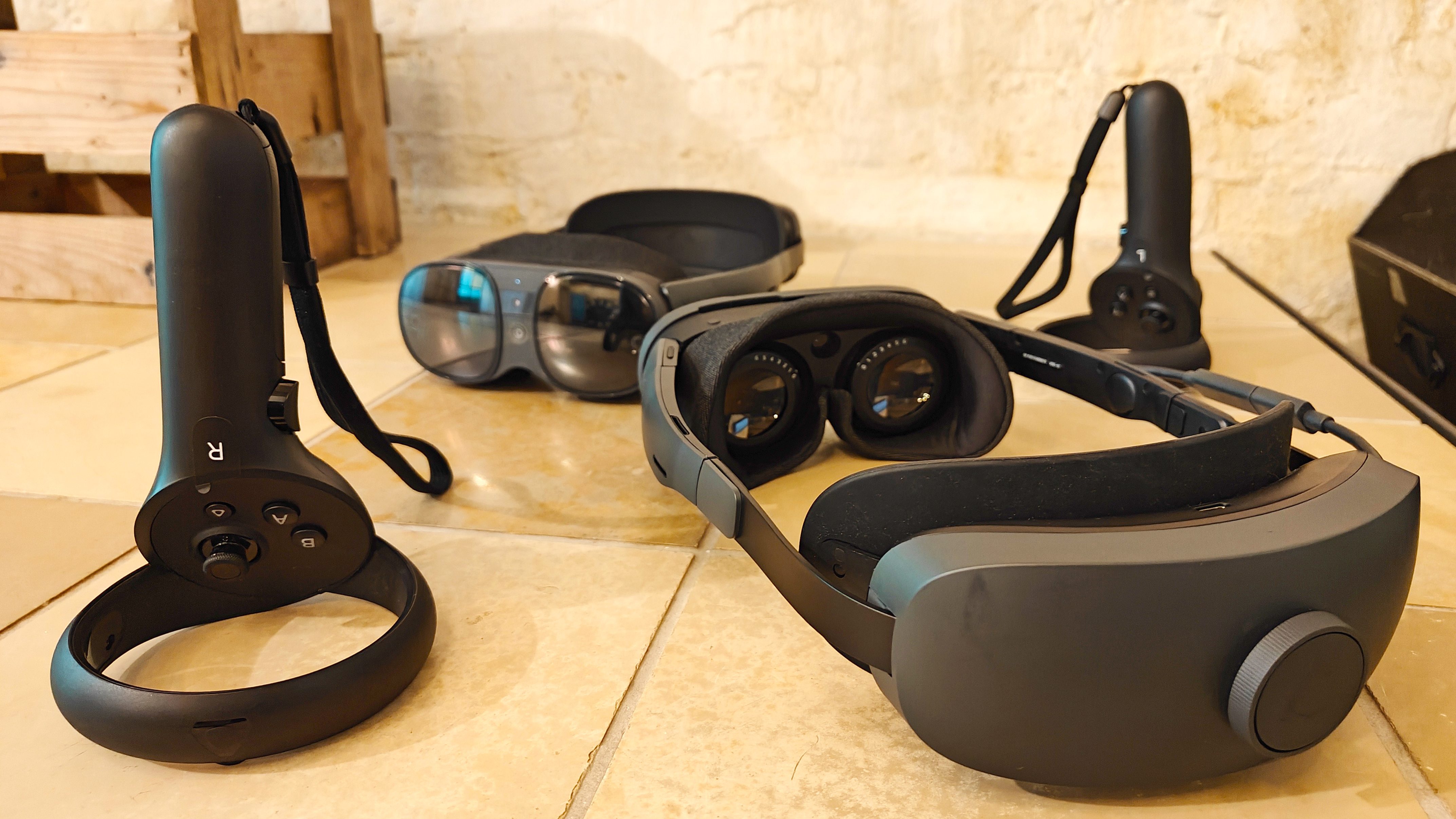
The HTC Vive will probably be perceived by the public together with Oculus as the pioneer of “professional” VR glasses. At the CES 2023, the Taiwanese company took the step towards the first standalone VR glasses for consumers with the Vive XR Elite. We have reviewed the all-in-one VR headset, which costs $1,099 a pop in a ‘heads-on’ for you to see how much different it is from the competitors and why the relatively expensive investment is recommended by us.
Good
- Super lightweight case
- Superior RGB passthrough
- Up-to-date processor
- SteamVR ready (wired or WiFi 6E)
- Battery can be hotswapped
- Diopter adjustment
- Modular design
Bad
- Too little program memory
- Unfortunately too expensive
- Eye- and face-tracking are optional
The Vive XR Elite in a nutshell
As what felt like one of the first manufacturers of, let’s put it this way, “professional” VR glasses in 2015, HTC Vive took a long time to launch its first standalone VR glasses for consumers. At the Consumer Electronic Show 2023 in Las Vegas, the time had finally come for the Vive XR Elite to be unveiled to the masses at the beginning of the year, and it quickly becomes apparent: The long wait was worth it!
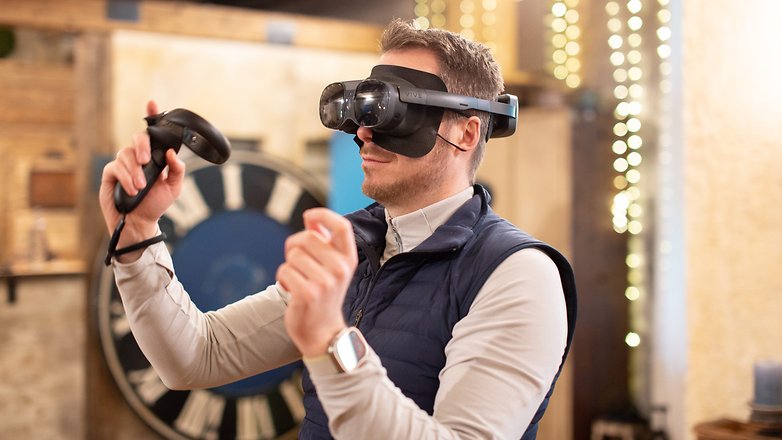
HTC is more than happy to charge you a whopping $1,099 for the modular Vive XR Elite. Besides the headset, two battery-powered controllers (right & left hand), a replaceable battery (including the holder) for the VR headset, and the “glasses frame” modules are included. In view of a Meta Quest 2 that starts at $399 or a Pico 4 starting at $530, that is subjectively quite expensive, if you leave out the $1,499 Meta Quest Pro and the still unknown Apple Reality One/Pro.
Mark Zuckerberg, as the new owner of Oculus, has never made a secret of the fact that the Oculus Quest 1 and Oculus Quest 2 (now Meta Quest 2) are subsidized through advertising. In other words, your data is used by Facebook aka Meta for advertising purposes. The same applies to the Pico 4, where ByteDance is the owner and takes advantage of your data. That is precisely not the case with HTC, as Fabian Nappenbach, Product Marketing Director at HTC Vive, confirmed with us in a personal interview.
To make things clearer, the 128 GB of internal memory should be mentioned at this point, which is also available as an entry point with the competitors except for the Meta Quest Pro, which starts with 256 GB of internal storage space. The Vive XR Elite is now available for pre-order at HTC or Amazon and is only listed in this storage configuration so far. According to what we know right now, it will be delivered to purchasers at the end of February 2023.
Design & Display
The Vive XR Elite basically speaks for itself visually, without even having you take a look via its pancake lenses. Anyone who has ever spent more than an hour in virtual reality with the usual VR headsets in front of their eyes knows what I am talking about. You will begin to feel pressure on the nose, under the eyes, and the forehead immediately afterwards, being an indictment of what you have been doing for the past few minutes.
That should now change with the HTC Vive XR Elite. If you’re a little familiar with the Vive portfolio, you’ll recognize certain design overlaps with the HTC Vive Flow. I think the lessons learned from the 189-gram “predecessor,” which still required smartphone connectivity, were quite useful for in influencing the final design of the XR Elite.
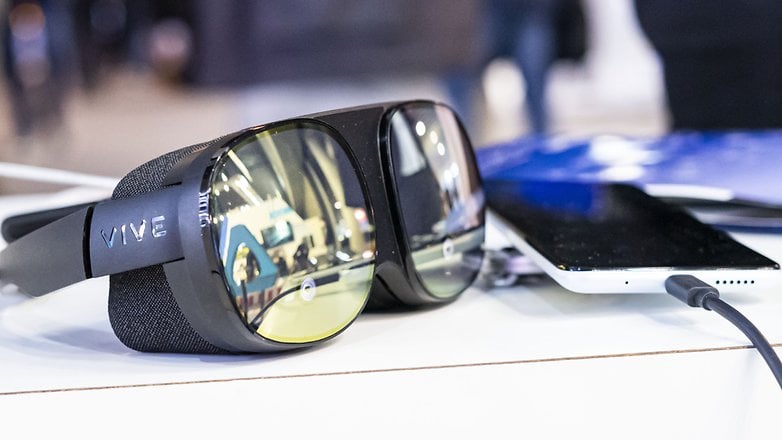
Things aren’t quite that easy with HTC’s latest standalone VR goggles after all. With the almost 5,000 mAh battery positioned at the back, the headset still weighs 625 grams, which is not lightweight at all compared to its competitors (503 to 722 g) according to the specifications. Intensive gaming sessions are required to confirm the initial impression of a significantly better sitting comfort in the long run.
HTC calls its newcomer “modular” as well. The battery at the back can be removed along with the head mount and locking wheel, and can be fitted with flexible eyewear straps. The entire construction, including the removable and washable screen, looked a bit fragile to me. However, it is by no means fragile, as I was able to determine after spending a rather spirited amount of time with it.
Vive XR Elite with a 4K display
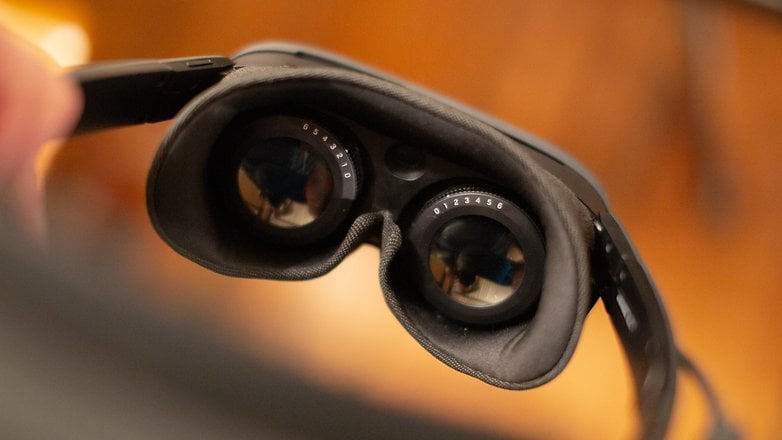
If you were to remove the battery module along with the head mount alongside the locking wheel, the Elite will tip the scales at 240 grams in glasses frame mode, which probably gives it a clear competitive advantage – for now. After all, the two pancake lenses, each with a 2.3-inch LCD display and a maximum refresh rate of 90 hertz, still remain. Those who wear spectacles to correct their vision can put them aside safely since HTC provides a correction of up to minus six diopters on the lenses.
The 1,920 × 1,920 pixels resolution is minimally higher than the Meta Quest 2 we reviewed (1,832 x 1,920 pixels), but let’s not forget that Meta will probably introduce the Quest 3 to retail in the coming fall, which will probably adapt some things from the Quest Pro. The contrast and the 110-degree wide field of view of the Vive are pleasing to look at at first glance, even though black is more like gray due to the LCD. I cannot yet judge the stereo sound of the two speakers built into the frame, since it was quite loud at the event and a fair assessment is not yet possible, but will follow up with this aspect in our detailed review.
However, the HTC Vive XR Elite takes the cake with its passthrough. Without any further spoilers here to influence the “tracking cameras & sensors” category: I have never seen such a good Mixed Reality result on a headset display! HTC also installed a laser depth sensor above the 16 MP RGB camera, which probably also contributed to the good results.
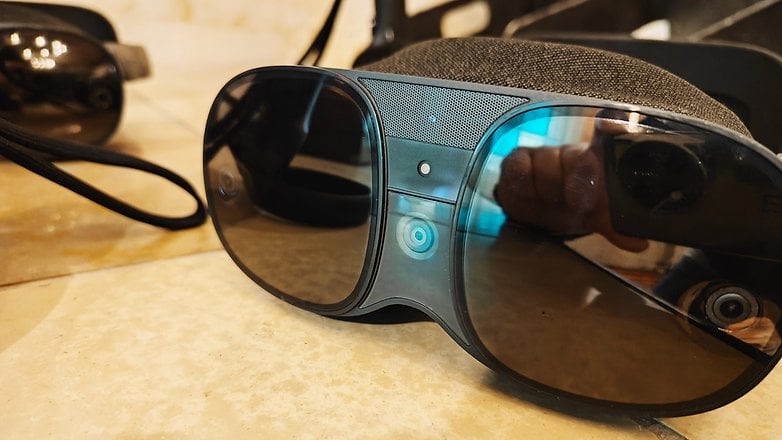
HTC installed a pair of USB Type-C ports, but we missed out on an analog jack for an option to connect a typical pair of headphones. Presumably, a Bluetooth or Type-C audio connection will be possible. We will provide additional information on this matter in the detailed review. There is also an IPD slider on the bottom, which allows adjusting the pupil distance accordingly. This is not a big deal, but I have seen the implementation done in a more complicated manner elsewhere.
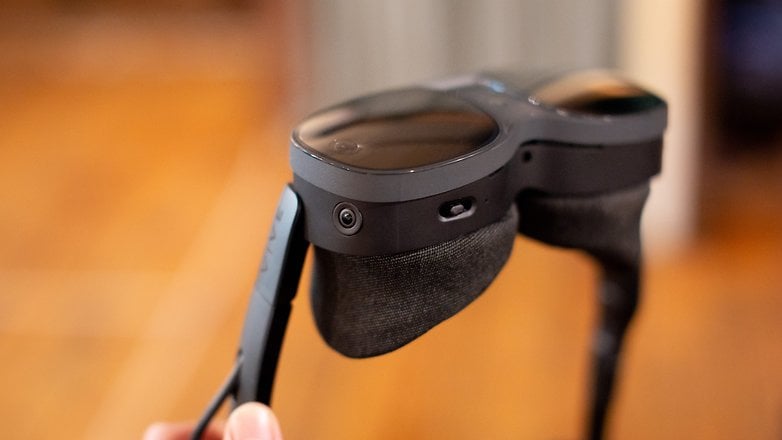
Vive XR Elite in use
Now that we’ve more or less covered the hardware, let’s take a look at the virtual, or in our case, particularly impressive “mixed” reality. What makes the Vive XR Elite stand out is its standalone functionality – there is no need for a cable to connect the glasses to a high-end gaming PC or Sony PlayStation 5.
Although a connection to the “primary” computer is very much possible and does not even have to be via USB cable (the alternative being a WiFi 6E connection), we are primarily interested in games and applications that can be experienced on the Vive XR Elite without harnessing the power of the PC or PS5, using only with the app offered by the Steam VR Store.

At the Berlin event, we had applications like Maestro, Unplugged: Air Guitar, and a reaction game available in mixed reality. Unfortunately, neither the over 100 announced apps from the Vive port (VR app store), nor the Homebase, which is supposed to be two stories at HTC, were available.
If I understood HTC correctly, then the Homebase is practically in line with the “Viverse”, which is probably to be understood as a metaverse of HTC and is supposed to grant access to all other manufacturers like Meta, Pico, Samsung, and Sony. With a corresponding individual avatar, you can virtually invite friends to your home, launch games from the in-house shelf, or beam yourself into other worlds and places. As I said, none of these were available at the release event, which is why I can only report a little about it.
What I can report on, however, and actually feel impressed by, is the aforementioned reaction game, which professional athletes also incorporate into their daily training. The game takes place in the Mixed Reality environment, so I got a grid with virtual red buttons, but could see everything around me crisp and clear. So well, in fact, that I could read off my laptop and make handwritten notes in my booklet. Stefan also sent me a WhatsApp message from his Apple iPhone 13 Pro with the XR glasses on, for example.

That, my friends, is made possible thanks to the 16 MP RGB passthrough camera with additional laser depth sensor. Not even the Meta Quest Pro can do that, which I was also able to review. That is currently an absolutely unique selling point. I, for one, am already looking forward to the visit of the Vive XR Elite in the NextPit editorial office.
Vive XR Elite performance
Like the Meta Quest 2 and the Pico 4, HTC powers this headset with a Snapdragon XR2 Gen 1 SoC. The octa-core processor was manufactured using the 7 nm process and offers a maximum clock frequency of 2.84 GHz for the primary core. Three additional performance cores clock up to 2.42 GHz, and the four energy-efficient Cryo-585 cores offer the familiar clock rate of 1.8 GHz. An Adreno 650 GPU (Graphics Processing Unit) is on hand for graphical needs.
Now, the Meta Quest Pro already has a newer Snapdragon XR2+ Gen 1 installed. While Qualcomm itself provided little to no information about the new processor, Meta mentioned a performance increase of up to 50%, but Fabian Nappenbach countered that claim that in our interview. According to him, the processor is not clocked at a higher speed, as is usually the case with Snapdragon Plus models. Instead, the chip would use a different design that allows for more efficient cooling.
Thus, HTC’s headset would realize an almost identical performance to the Quest Pro with the older SoC, which is equipped with a heat pipe made of copper and an additional hardware fan. I am actually not convinced by this statement, because Qualcomm wrote on its site:
Snapdragon XR2+ Gen 1 platform enables state-of-the-art interactions with 50 percent higher sustained performance compared to the previous generation.
As mentioned, Qualcomm did not disclose any core or clock rates for the chipset. I believe that the last word on the matter has not yet been released.
In terms of memory, the Vive XR Elite is currently quite manageable: 12 GB of working memory and 128 GB of internal storage space have been installed in the all-in-one headset in Taipei. My question about additional storage variants later, since the Meta Pro, for example, begins with 12/256 GB, was denied for the time being. Nappenbach does not want to exclude anything, but does not currently see a need, since currently available games would hardly take up any space and a USB stick (Type-C) can be connected for an optional expansion. This indirectly answered the question about the possible sideloading of apps.
Tracking Cameras & Sensors
Like the other competitors in the standalone VR glasses sector, HTC’s Vive XR Elite also offers four 6-DoF inside-out tracking cameras mounted on the outside of the glasses, plus the already joyfully mentioned 16-megapixel RGB camera for the passthrough and a laser depth sensor positioned above it. This worked quite well in my first run through, although I have heard other opinions from YouTubers like MRTV, who was on-site in Taipei for the launch, but admitted that he was “only” able to test out a pre-production model.
Unlike the first Vive VR glasses, the Elite doesn’t require a base station(s). Everything begins from the compact glasses and the two hand controllers, which are also equipped with additional gyroscope and ultrasonic sensors once again. However, the Elite is also capable of so-called hand tracking, which Stefan could convince himself of during his first initial conducting experiences with the app known as Maestro.

If you were to take a closer look at the glasses, you will probably have noticed an opening on the bottom where the nose normally rests. An optional eye and face tracker can be attached there later. We couldn’t get hold of any pricing information yet, but I assume similar prices as for the tracker that was delivered later for the HTC Focus 3 that costs $350 in total.
That makes sense for the productivity sector, where applications like “Vive Sync” are used, which also support tracking and allow you to recognize the emotions of your opponent in interactive 3D meetings.
Vive XR Elite battery
In my opinion, the battery is one of the most important issues for all-in-one headsets. Because as long as we don’t have OTA charging, power has to come from somewhere. HTC also installed a 5,000 mAh battery at the back of the Vive XR Elite. The position on the back of the head is supposed to achieve a particularly balanced weight ratio.
This is not necessarily new, but it does make sense. However, pressure points were experienced on Meta and its Pro after an hour of gaming. I can’t make a judgment on the HTC glasses yet, since I haven’t worn the headset for long enough a period. But that brings us to a completely different aspect, which is a real killer feature of the Elite in my opinion: the replaceable battery.

This is because it can be changed via “hot-swapping”, provided you have purchased a second battery (its price still remains unknown). This means that you can change the battery in the middle of the game without shutting down the glasses and deleting your current game state. If you have a second battery, it should be charged faster than the first battery is drained in gaming mode.
But this function also has other positive features, which I already briefly mentioned in the “Design & Display” segment. You can simply connect any conventional battery pack instead of the battery on the back. It is also possible to connect the power supply of trains, buses, and airplanes to supply the latest HTC VR glasses with juice.
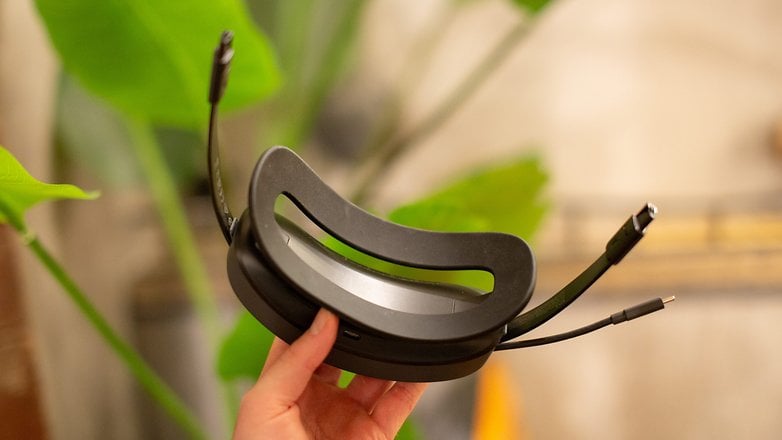
The two hand controllers also feature batteries with a yet unknown capacity, which should be enough for 15 hours of gaming per charge according to initial reports. The combined battery holder on the back of the headset is supposed to last for two hours of continuous gaming. However, our personal review still has to confirm all of these figures.
Vive XR Elite technical specifications
| Technical specifications | |
|---|---|
| Device | |
| Image |
 |
| Display and optics |
2x 2.3 inch LCD panel |
| Dimensions |
155.1 x 70.5 x 200.7 mm (H x W x D) |
| Weight |
625 g (incl. battery) |
| SoC |
Qualcomm Snapdragon XR2 Gen 1 |
| Memory |
12 GB RAM |
| Expandable memory | via USB Type-C |
| Camera / Tracking |
4x 6-DoF tracking camera |
| Battery / runtime |
4,864 mAh (5 volts) |
| Connectivity |
WiFi 6E – 2.4 GHz – 5 GHz |
| Sound |
Stereo speaker |
| Other |
2x USB Type-C ports (version 3.2) |
| Controller |
Specifications per controller: |
| Operating system |
HTC Wave based on Android |
| Sales start and price |
February 28, 2023 |
Early Verdict
Fortunately, I was able to attend a Meta and an HTC event in the same week, where I was able to test the Meta Quest Pro and HTC Vive XR Elite standalone VR glasses, respectively. So a direct comparison is immediately possible. And by far, the Elite all-in-one headset emerged the winner.
First and foremost, I was impressed by the modular design, which allows the Vive to enter mixed or virtual realities even on a plane or during a long train ride. Nevertheless, I can also play very popular big Steam VR games, such as Half-Life: Alyx when connected to the PC or work productively in “Vive Sync”, if desired.
The replaceable battery prevents forced breaks, which are always imposed when it comes to other headsets. And the display with diopter correction is simply more advanced than what its competitors currently offer. However, the RGB passthrough camera has removed any doubts, which made it possible to work on the smartphone or notebook display while wearing VR glasses. Now I also believe in the dream of Mixed Reality again.
Of course, despite the preliminary verdict, I can’t leave the $1,099 sticker price unmentioned. What can I say: That’s how much the headset costs if you don’t want your data to be read and possibly sold or used for advertising purposes.
